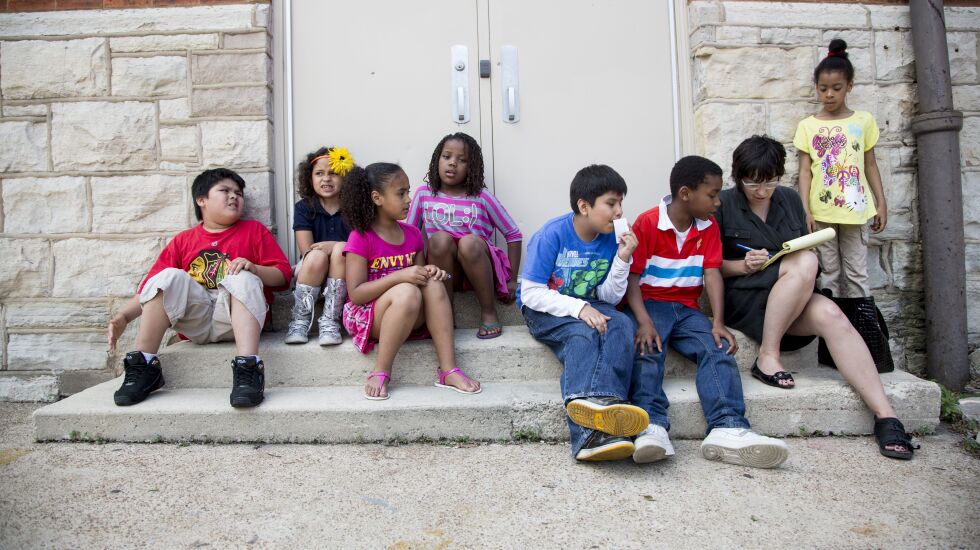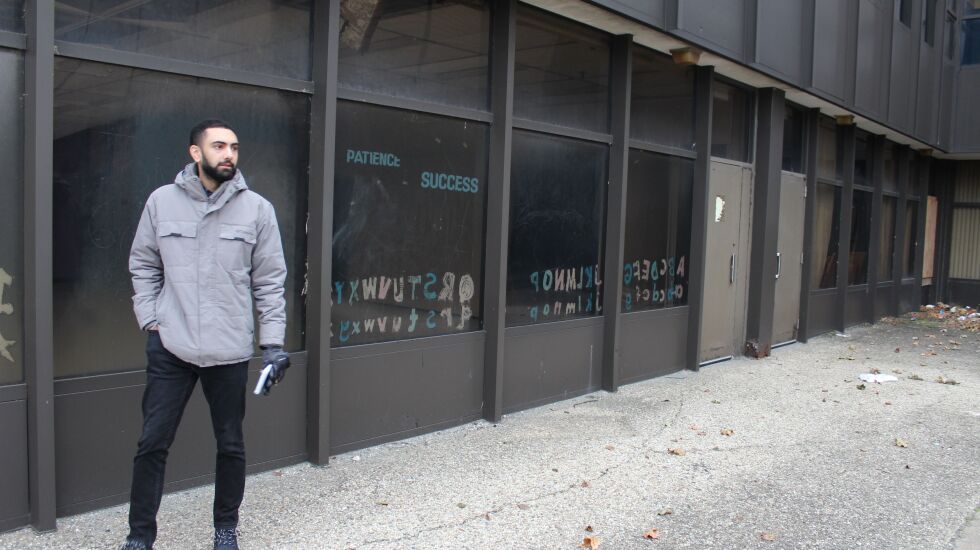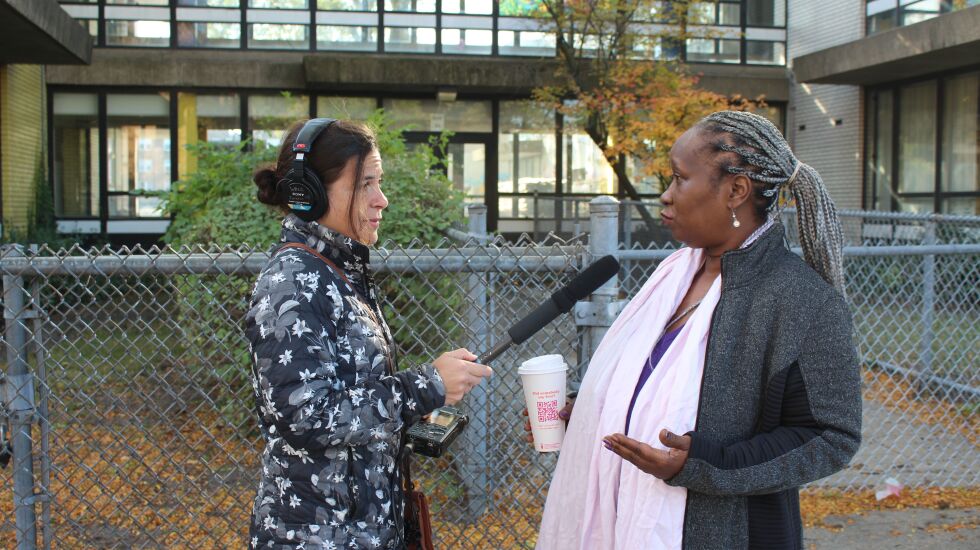
Outside what once was King Elementary School on the West Side, a long-ago graduate shared a choice piece of neighborhood gossip that seemed too ridiculous to be true.
After King was closed by Mayor Rahm Emanuel in 2013 with 49 other Chicago public schools, almost all of them in Black neighborhoods, its vacant building became a bootleg animal shelter.
That’s what Willie McIntosh — who was kind enough to roll down the window of his car outside his mom’s house while tucking into some Burger King — told me and WBEZ’s Sarah Karp.
Some guy had been keeping cats and dogs in cages in the building, enough of them for long enough that animal control and the police got called. Was the guy selling them on the internet? Unclear, McIntosh said. “It was all kept on the hush.”
Eventually, Chicago Animal Care and Control sent me its file for the address. It showed that, in March 2018, five years after the school was boarded up, it removed 15 dogs and 43 cats from the building.
“I was taken aback,” said McIntosh, a lifelong resident of the block abutting King.
Right after that, King was demolished — the only one of the 46 vacated CPS buildings that ended up getting knocked down.
Replacing it were tight rows of white and gray houses. Their vertical siding set them apart from the rest of the neighborhood. And so did their price tags — in the $700,000 range.
It was such a startling change that my reporting partner didn’t realize she was in the right place. She called, saying she couldn’t find the school, though she’d driven around the block a few times.
“Wow,” she said, realizing now that it was gone.
I remembered King from early 2013. It had cheerful mosaics and a washer and dryer so kids wouldn’t have to miss school for a lack of clean clothes.
Back there now, we were trying to find out what became of each of the 50 schools the city had shut down 10 years earlier in a pivotal event in Chicago’s history — the nation’s largest single mass-closing of public schools.
Many promises had been made in an effort to sell the unpopular plan that would, with few exceptions, affect Black families most because enrollment at schools in largely Black neighborhoods had declined so much.
Could we nail down what happened one school at a time? It was the longest beat reporting assignment I’d ever been a part of.
In 2013, I was the Sun-Times’ new education reporter, taking on the job and the assignment of reporting on the closings while pregnant with my son. Now, I was part of a reporting team that spent 10 months investigating the lasting impact of those school closings.
Nader Issa, the Sun-Times education reporter who suggested this story, and I joined colleagues from our recent merger with WBEZ. Reporter Sarah Karp and project editor Kate Grossman had written in 2013 about the closings. Data analyst Alden Loury also signed on.

We mined our old files and emails for what we’d saved from back then. We also rummaged through basements and garages looking for old notebooks with names and numbers of people we’d met as they pleaded for their schools to be saved.
We’d still need to gather data and records from Chicago Public Schools, the city, the state and Cook County, many thousands of pages, lengthy scrolls of digital files.
In pairs, we visited the school sites, nearly all of them on the South Side and the West Side, with cameras to document their current condition and microphones to capture the sounds and voices for radio pieces.
In 2013, Chicago city and school officials insisted they could handle the closings. They promised they could repurpose the empty buildings, transition 13,646 students to existing schools and support the 17,000 kids already attending those schools as hundreds of new classmates joined them.
They also said they would even end up saving money after selling the old buildings.
But when we asked now about those promises, City Hall and CPS officials said our records requests regarding students’ test scores and building repairs were too burdensome. CPS said it couldn’t track the costs of securing the buildings either.
Mayor Lori Lightfoot declined an interview request and wouldn’t comment when asked about what she’d done to find new uses for the empty buildings. Her successor, Mayor Brandon Johnson, spoke with us for 20 minutes.
CPS CEO Pedro Martinez’s staff wouldn’t let us inside schools or set up interviews with kids.
In one instance, CPS canceled an interview at a rapidly shrinking school minutes before it was supposed to happen, saying it didn’t want to risk retraumatizing students from schools it had closed.
The people who’d ordered, approved and oversaw the closings didn’t seem to want to revisit this chapter long after they left CPS — save for a single former Board of Ed member. Emanuel, who championed the mass closings, is now U.S. ambassador to Japan and didn’t reply to messages. Neither did Barbara Byrd-Bennett, the former CEO who was in charge back then, whose tenure ended in a contract bribery scandal and federal prison.
So who came to the rescue, eager to say their piece after years of living by closed schools across the South Side and West Side? Neighbors.
When we set out to visit each of the empty buildings, we looked for sunny days to catch passersby outside for a chat or bump into people walking a dog or mowing the lawn, parking the car or out on a porch.
Just as they had taken it upon themselves to pick up the garbage that accumulated and call 311 to report graffiti or vandalism or abandoned cars, a big part of the task of relating the happenings from the last decade and the lack of progress fell to them.
We are grateful to all of you who spoke with us for filling in those gaps. Reliving your memories of fighting for schools. Recalling what your schools used to offer — a basement pool where everybody learned to swim, after-school bands and clubs. These had, after all, been neighborhood schools for kids who lived around them, and we were struck by how many of you stayed put after graduation.
When official channels put up roadblocks to our reporting, there you were.
We couldn’t have told these stories of Chicago’s neighborhoods that lost schools without you.
Contributing: Nader Issa, Sarah Karp








